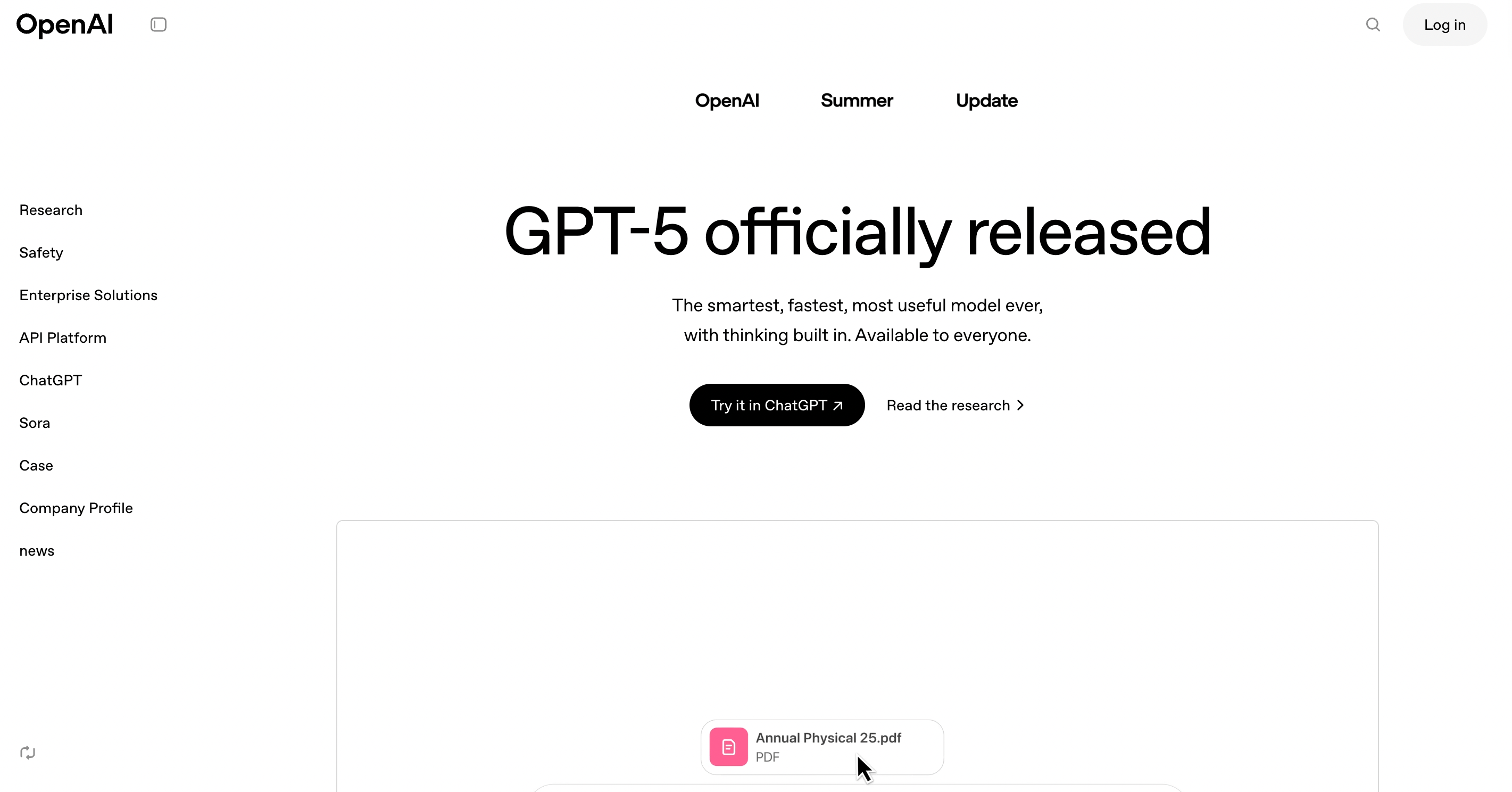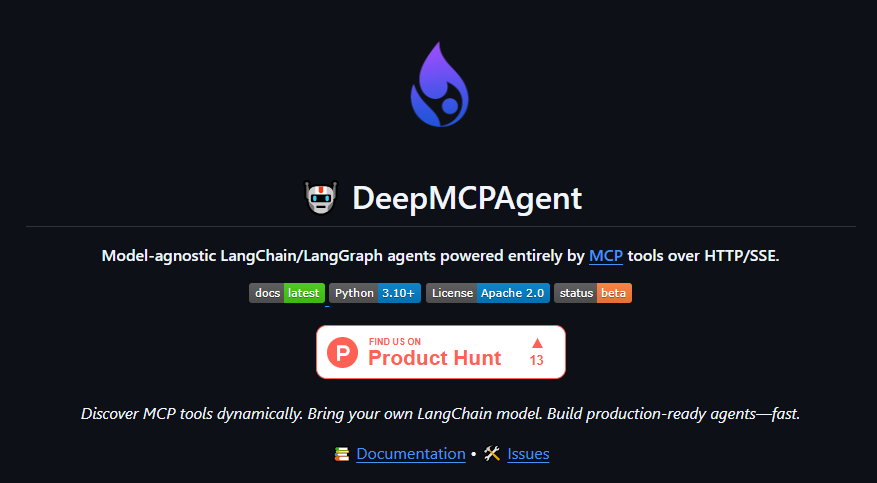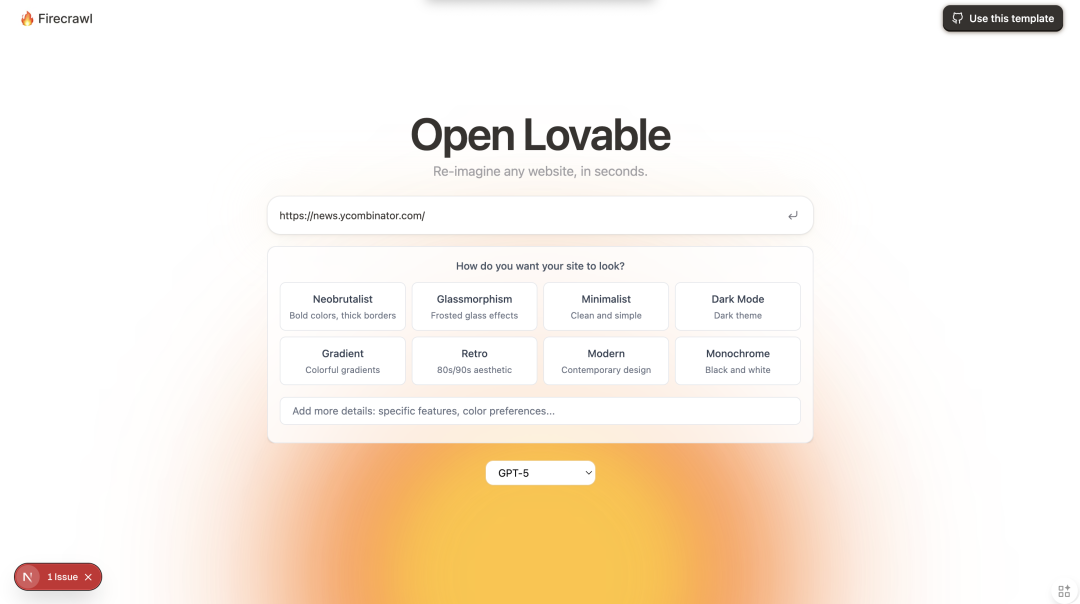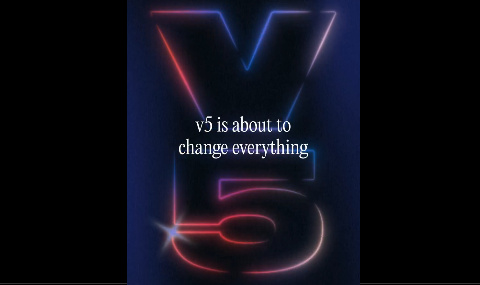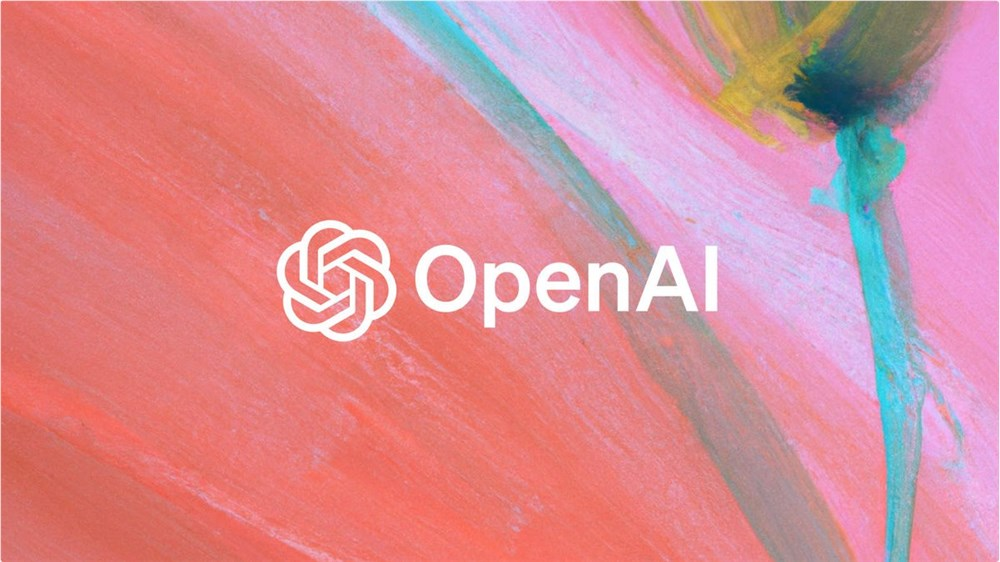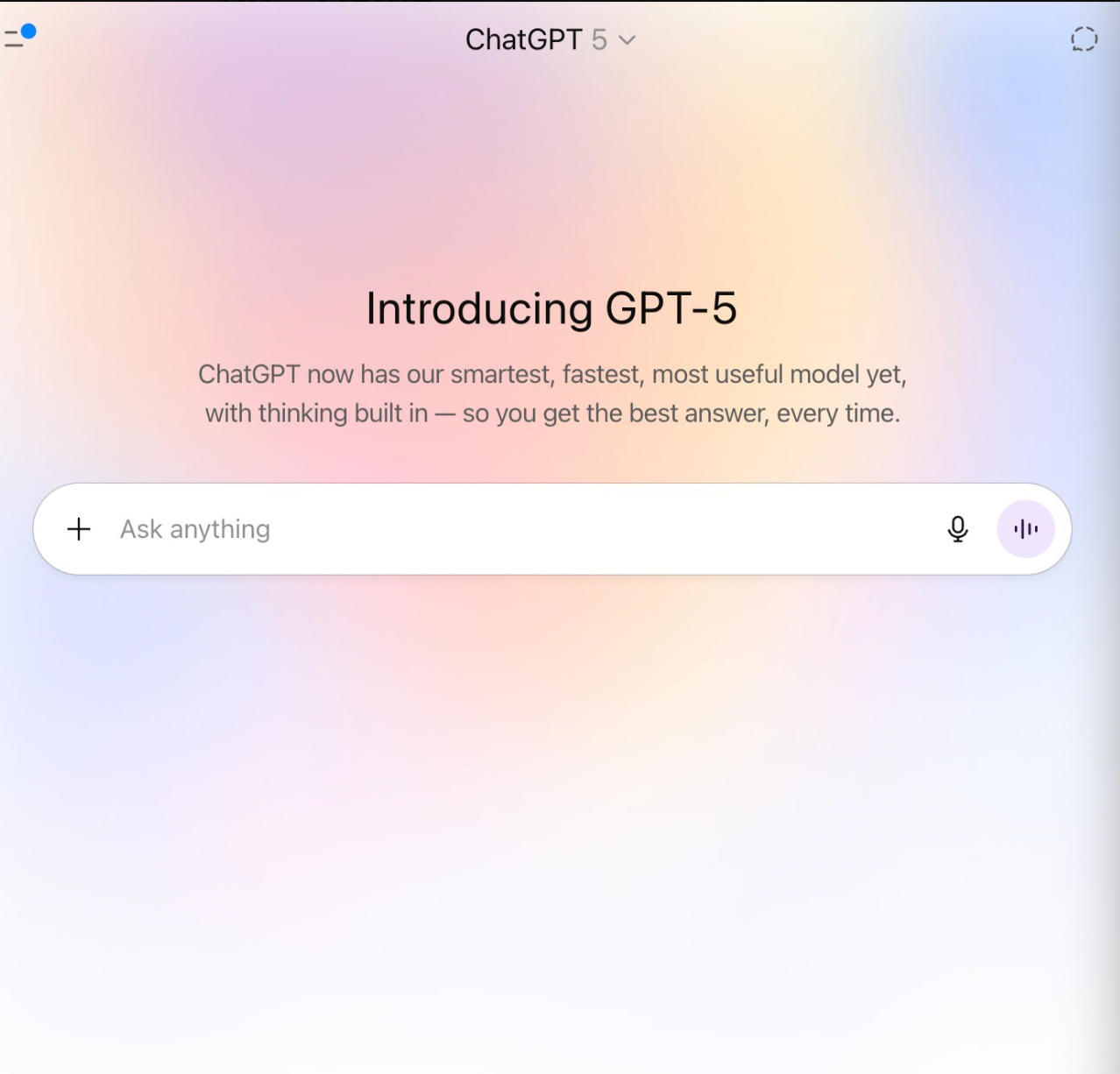
Soaring Performance: Lessons from the Experts
Altman uses a powerful metaphor to illustrate GPT-5’s intelligence: if GPT-3 is a high school student and GPT-4 is a college student, then GPT-5 is a “PhD on call.” This major leap forward is defined by several key features:
-
Superior performance: GPT-5 surpasses previous models on benchmarks in programming, math, writing, healthcare, and more, setting new industry standards.
-
Significantly Reduced Hallucinations: Thanks to new training methods, GPT-5 is significantly less likely to make factual errors. This improvement is particularly noticeable in its “Deep Thinking Mode,” where accuracy has significantly increased.
-
Multiple Personalities: GPT-5 introduces four different “personas”—Cynic , Robot, Listener, and Nerd —allowing users to tailor their conversations and receive more contextually aware and emotionally intelligent responses.
-
Enhanced security and transparency: With a new “safe completion” mechanism, GPT-5 can provide useful answers within safe boundaries. If a request must be denied, it does so transparently, explaining the reason and offering a safe alternative.
GPT-5’s responses end with stronger emotions, clear images, and focused metaphors, building a grander emotional arc and evoking the emotional atmosphere of culture and region.
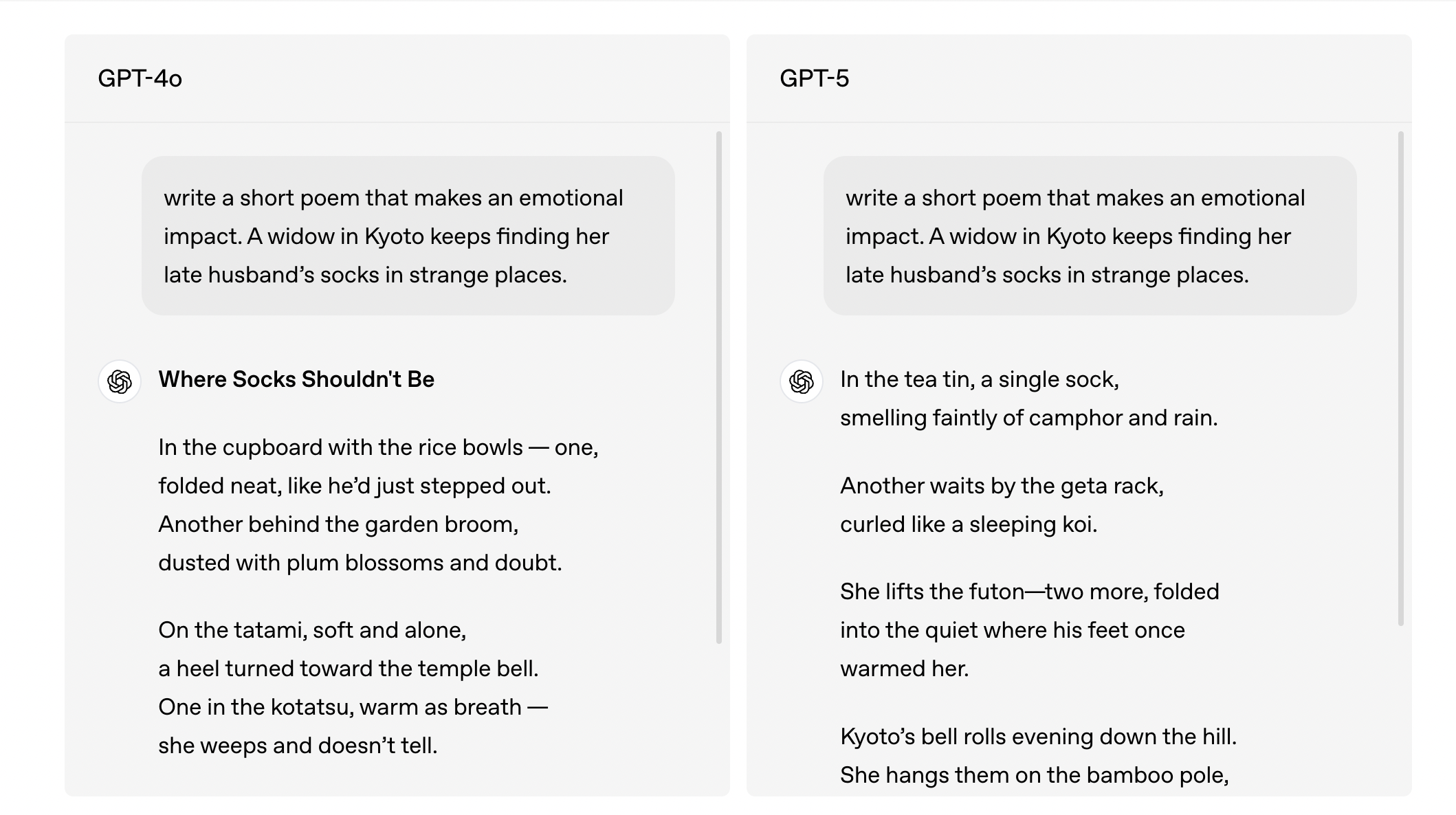
Architectural breakthrough: unified routing system
GPT-5’s most notable innovation lies in its new unified routing system . This architecture acts like an AI central nervous system, intelligently directing tasks to the most appropriate model in real time.
-
Intelligent Task Delegation: For simple questions, the system uses a lightweight model for quick, low-cost responses. For complex problems or when prompted to “think carefully,” it automatically switches to a more powerful deep reasoning mode, providing expert-level answers.
-
Balancing Cost and Efficiency: This system addresses a core challenge of large-scale AI deployment: managing high computing costs. By dynamically allocating resources, OpenAI can ensure a high-quality user experience while making its operations more efficient. According to official data, GPT-5 achieves greater value while using 50% to 80% fewer output tokens for certain tasks.
Based on our evaluation, GPT-5 (with reasoning capabilities) outperformed OpenAI o3 by delivering greater value with less processing time. For tasks like visual reasoning, agent coding, and solving graduate-level scientific problems, GPT-5 reduced the output token count by 50% to 80%.
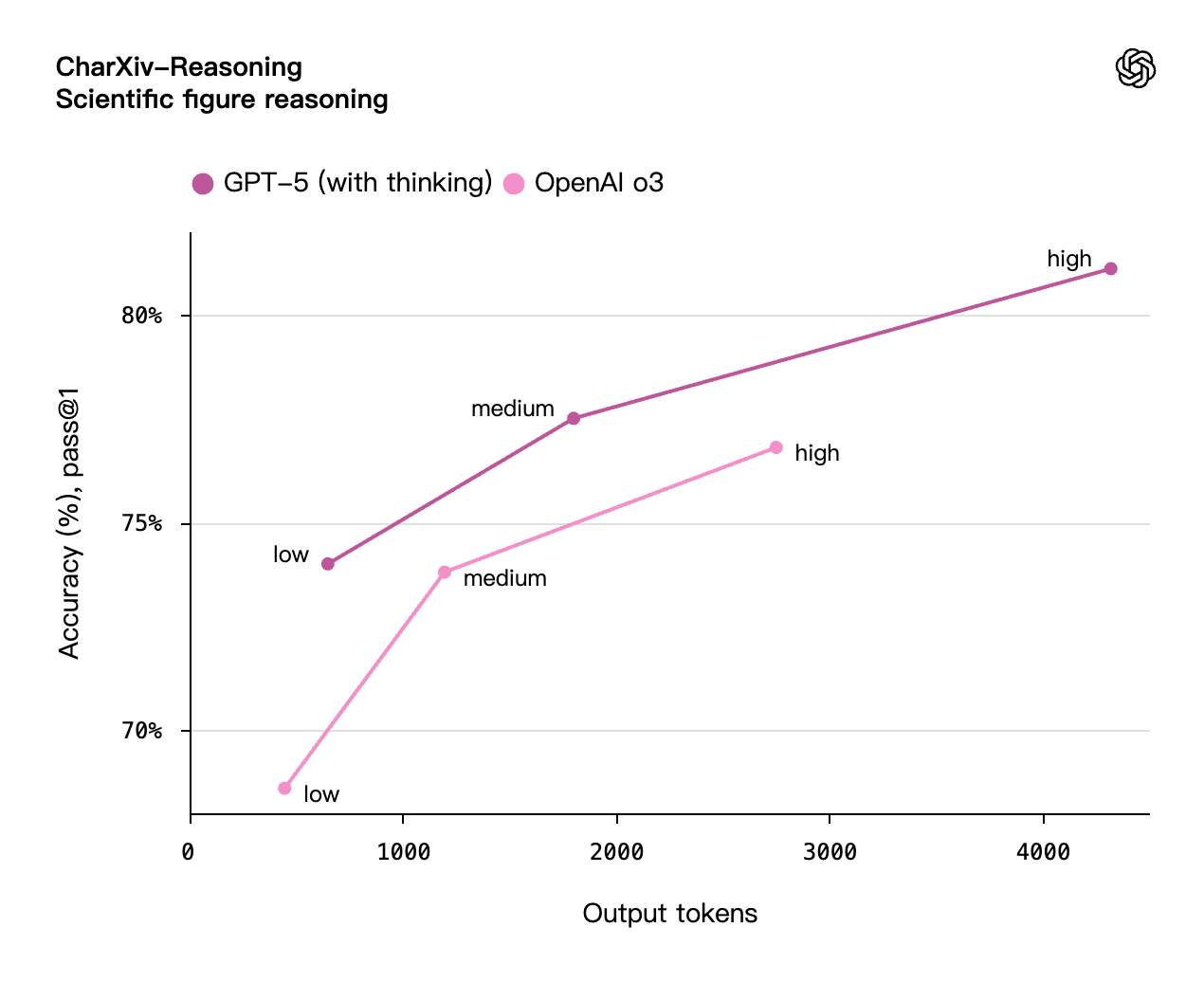
Business Model Evolution: From Advertising to “Agent Service”
While GPT-5 is the default model for all ChatGPT users, its routing system paves the way for a new monetization strategy. OpenAI is moving away from traditional advertising in favor of an “agent service” model.
-
“Agent Service” for Commercial Intent: When the routing system detects a user’s commercial intent (e.g., “I need to book a flight” or “I want to buy a new camera”), it can provide a more in-depth service. This could include recommending products or connecting with partner platforms, allowing OpenAI to earn a commission or service fee from the transaction.
-
Data-Driven Monetization: The routing system continuously learns from user behavior—such as which models are preferred and how answers are rated—to refine its decision-making. This enables OpenAI to not only serve users better but also to more accurately understand their consumption patterns, laying the groundwork for a data-driven commercial future.
The Future: AI as a “Third Consumption Space”
- The launch of GPT-5 isn’t just another product update; it signals the creation of a “third consumption space” powered by AI. In this new ecosystem, users can complete everything from information gathering to decision-making and final transactions through a single conversation with the AI.
- The unified routing system will be the central hub, connecting users, content, and services. This will drive significant operational efficiencies for businesses that partner with OpenAI.
- Ultimately, GPT-5’s powerful performance and innovative architecture elevate AI from a simple tool to an intelligent agent capable of understanding, planning, and executing complex tasks. It represents a significant stride toward Artificial General Intelligence (AGI).
How to Use GPT-5
GPT-5 is now the new default model in ChatGPT, replacing GPT-4o, OpenAI o3, OpenAI o4-mini, GPT-4.1, and GPT-4.5 for all logged-in users. To use it, simply open ChatGPT and enter your question; GPT-5 will handle the rest, automatically applying reasoning when it supports the answer. Paid subscribers can still select “GPT-5 Think” from the model selector or add a phrase like “Think carefully” to the prompt to ensure the model uses its reasoning capabilities.
Official website: https://openai.com/zh-Hans-CN/index/introducing-gpt-5/
